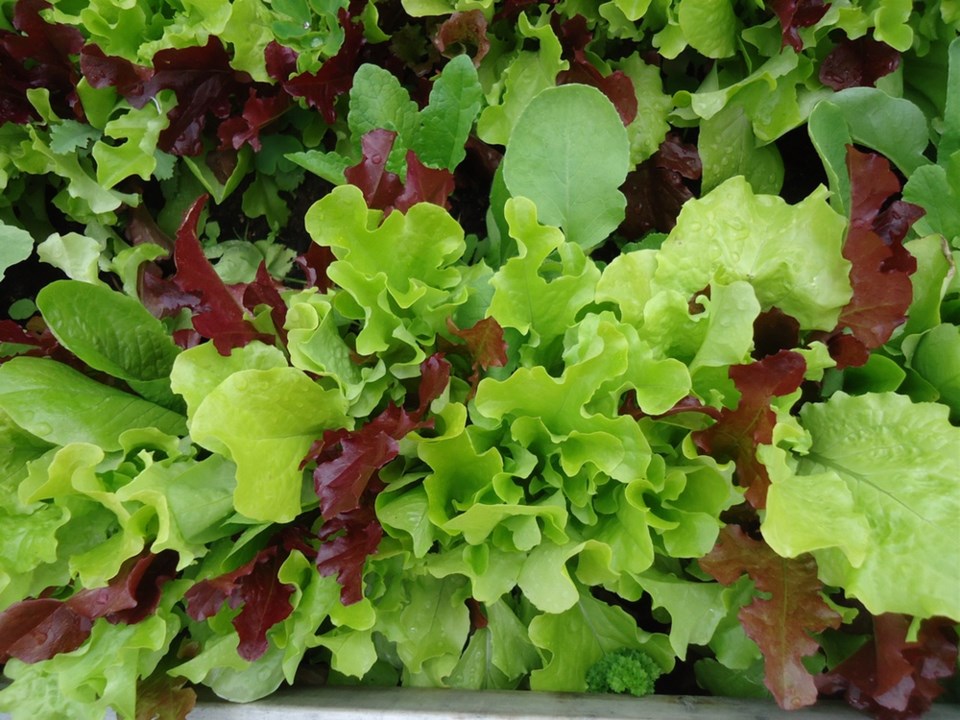With the popularity of vegetable garden this spring let’s look at which vegetables you can plant in April.
I am in zone eight, so it may be a bit different depending on where you live. There is nothing more rewarding than planting a seed and seeing it come to life. Since the nights are still cool it’s a good time to plan a salad garden. You can plant lettuce, spinach, swiss chard, radishes, kale, peas, potatoes, pac choi, arugula and spinach now.
Peas
Peas come in all sizes so be sure to read the seed package so you choose the variety that suits your space. You can find peas for every growing situation. There are dwarf varieties such as Provence, Dwarf Grey Sugar, Tom Thumb, Pea in a Pot and Snowbird that are well suited for smaller spaces and containers. Peas like Lincoln Homesteader only grow to about 3′ high so need less support than taller varieties. One year I grew Alderman Telephone peas and had no idea they could grow to 10′ high. Most peas need something to cling to when growing so you will need to add support poles and netting. Peas are best planted directly into the soil. Plant each seed 1″ deep and 1″ apart for dwarf varieties. For taller varieties I plant about 4″ apart. Water newly planted seeds daily if the soil feels dry. The idea is to not have your seeds dry out. Once the seeds have germinated you can cut back on watering. Harvest when the pods are bright green. If some of the pods turn yellow or dull looking, leave them on the vine so you can save the seed for the next season.
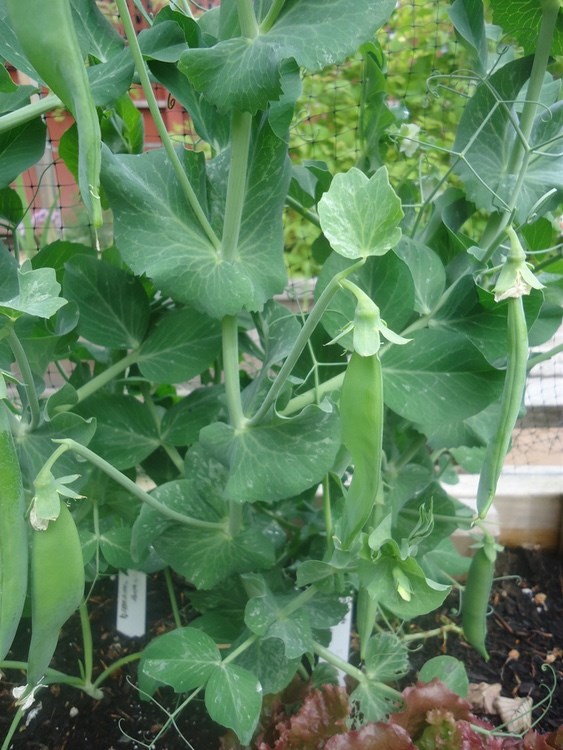
Lettuce
There are hundreds of different kinds of lettuce so grow what you love. I tend to grow mostly Looseleaf lettuce as you can harvest a few leaves at a time and the plant continues to grow. Lettuce seeds are small but grow very easily so it’s great for beginners. Carefully create a shallow row for your seed about 1/4″ deep and plant your seeds thinly in the row. Cover with a light dusting of soil and firm the soil with your hand so the seed comes into contact with the soil. Water gently and in about a week you should see your seeds germinate. Plant one-third of a row with lettuce and two weeks later plant the second third and then two weeks later plant the last of the row. This is called successive sowing and means you won’t have all your lettuce ready at the same time. Lettuce can be grown in containers, raised beds and in the ground. Its versatility makes it one of the most popular vegetables. Harvest a few leaves at a time as you need them leaving some leaves for photosynthesis. If you are growing in containers Looseleaf, Little Gem and Tom Thumb are good choices to plant.
Radish
Radishes are one of the fastest crops to grow. They usually germinate in less than a week and you’ll be harvesting in 28 days. Because they grow so quickly you can plant them in between slower growing crops. Plant radishes in early spring as they don’t like summer heat and will bolt and go to seed. Plant every week if you have the room for continued harvests. Sow radish seed 1″ deep and 1″ apart. Thin your plants with scissors at ground level if they are too close together. Radishes can be grown in containers and hanging baskets since they are so small but do just as well in raised beds and in the ground. Harvest them when you start to see the tops of the radish at the soil surface. You can usually feel around to see how large they are before picking.
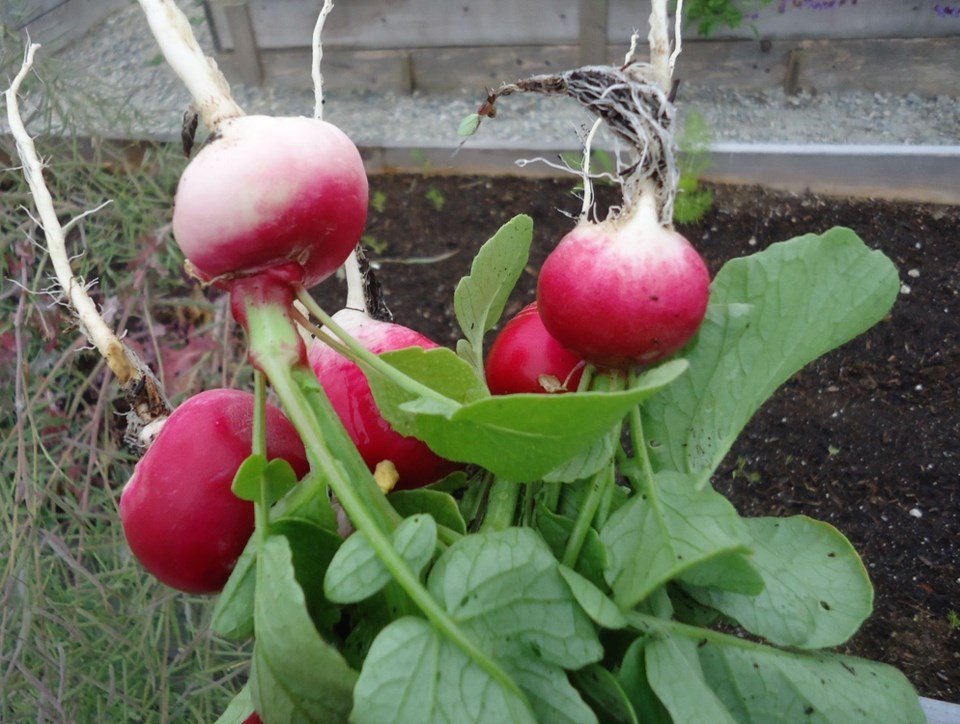
Spinach
Spinach is another cool season crop to plant in April. Plant spinach seed 1/2″ deep and about 1″ apart. Spinach requires a rich soil so be sure to add compost before planting. I top dress all my beds with compost before planting and work in a slow release organic fertilizer. Harvest young outer leaves for salad leaving the rest of the plant to continue growing. Keep sowing seeds until the end of April and start again in August. Spinach ‘Space’ is suitable for containers but most plants don’t get that big so your choices are unlimited. I place a floating row cover over my spinach as soon as it’s planted. This prevents leaf miner damage to the leaves.
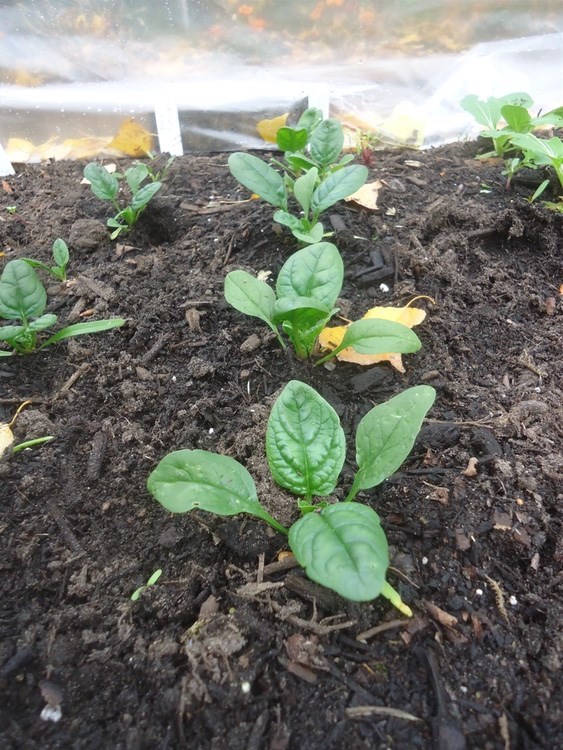
Kale
Kale, you either love it or hate it. Like I always say, grow what you love to eat. Kale is easily grown from seed. Create a furrow about 1/2″ deep and plant seeds about 2″-3″ apart. Plant spacing depends on the variety so be sure to read the seed package. If you are growing Russian kale it can take up 18″ of room in the garden and grow to 4′ high. If you are growing a baby kale it will take less space. Prism and Vate’s Blue are great in containers. To harvest pick the lower leaves first. Kale is very susceptible to cabbage moth larva which can eat the leaves. I always plant my kale seed and place a floating row cover over them. Once the plants are larger they can withstand some damage but tiny seedlings don’t need the added stress from insects. Kale is a biennial vegetable in that it produces lots of leaves in the first year and will overwinter. In the following spring it will grow new leaves and produce flowers and seeds in late spring. Try the flowers and buds in salad for a tasty delight.
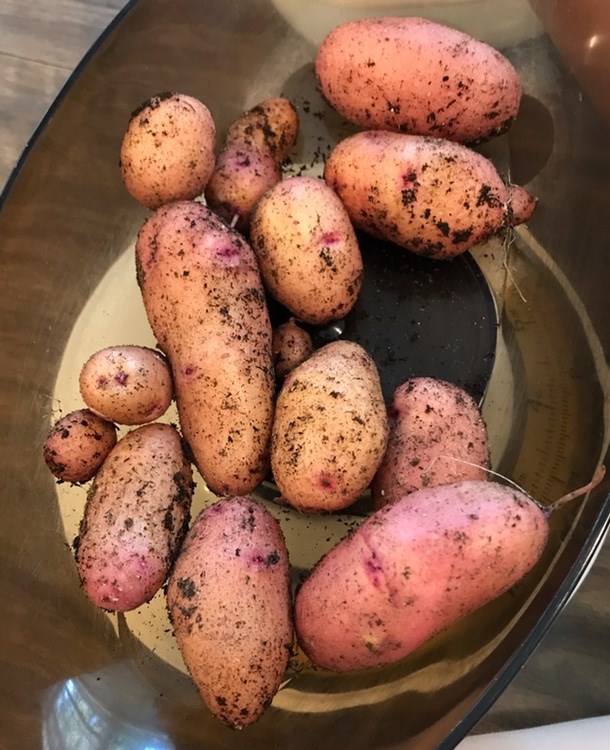
Potatoes
Potatoes are one of the easiest crops for beginners to grow. Buy your certified seed potatoes from the local garden centre or farm stand. All you need to do is dig a trench about 12″ deep and place the potato tubers in the hole. Cover with a few inches of soil and as the plant grows continue to add more soil to the trench. Potatoes grow best in cool, loose soil that is well drained and in an area of full sun. Don’t be surprised when your plants start to yellow in mid-summer. This is natural for the plant as its energy goes into growing the tubers below the soil. Once the foliage yellows it’s time to withdraw water a couple of weeks before harvesting. This allows the skin to toughen on the potato and makes it store better. Harvest in mid-summer by feeling below the soil to see how big the potatoes are. You can sneak a few early potatoes this way without hurting the plant. If the potatoes are too small give it more time before digging. Dig carefully using a hand trowel as a shovel can easily damage your crop.
